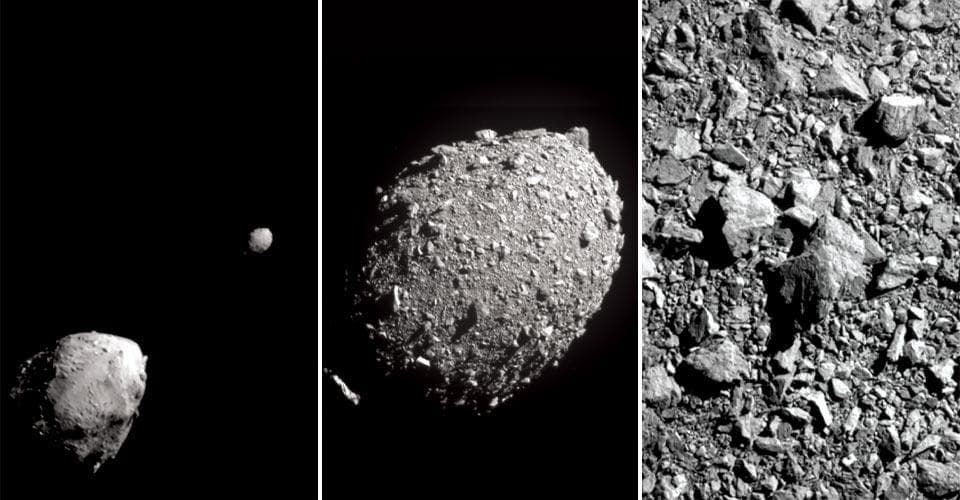Planetary Protectors

DART zeroes in on Dimorphos, seen 2.5 minutes before impact (from left) beyond the larger Didymos, then 11 seconds and finally with two seconds to go.
Terps Helped Propel NASA Mission to Redirect an Asteroid
By Chris Carroll
Photos courtesy of NASA/Johns Hopkins Applied Physics Lab
At first glance, a mission to slow down a tiny moon millions of miles away seems an odd strategy to defend our planet. But developing our ability to knock around large space rocks could one day prove invaluable if we ever discover one is bound for a collision with Earth.
In September, NASA’s DART (Double Asteroid Redirection Test) mission successfully launched the equivalent of a 1,300-pound bullet at 14,000 mph straight into the asteroid moon, Dimorphos, raising a dust cloud visible from Earth.
The test’s objective was to add at least 10 minutes to the moon’s 11-hour 55-minutes orbit around a larger asteroid, Didymos. Measurements a few weeks later showed it had increased a whopping 32 minutes.
“We smacked Dimorphos really good,” says Derek Richardson, an expert in the composition of “rubble pile” asteroids like the target, and dynamics lead for the mission. “I think DART has unequivocally demonstrated we could” deflect a dangerous asteroid hurtling toward Earth.
The University of Maryland was at the center of the mission, with numerous other astronomy and aerospace engineering researchers playing important roles as well. DART also solidifies the Department of Astronomy’s reputation for leadership in studying asteroids and comets. One DART team member, Professor Jessica Sunshine, directs UMD’s Small Bodies Group, formerly headed by the late Michael A’Hearn, who led the revolutionary Deep Impact mission that smashed a spacecraft into a comet to examine what was inside.
Says Richardson, “We’re happy to be carrying on the tradition now.”
0 Comments
Leave a Reply
* indicates a required field
